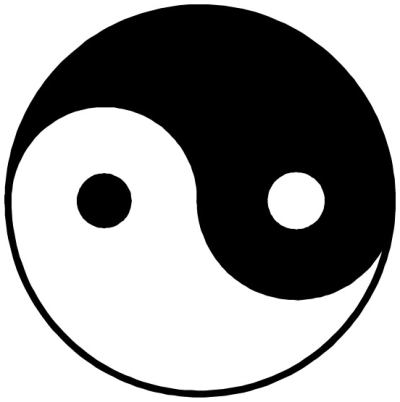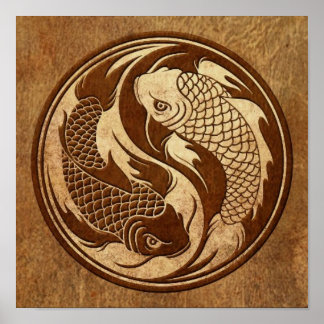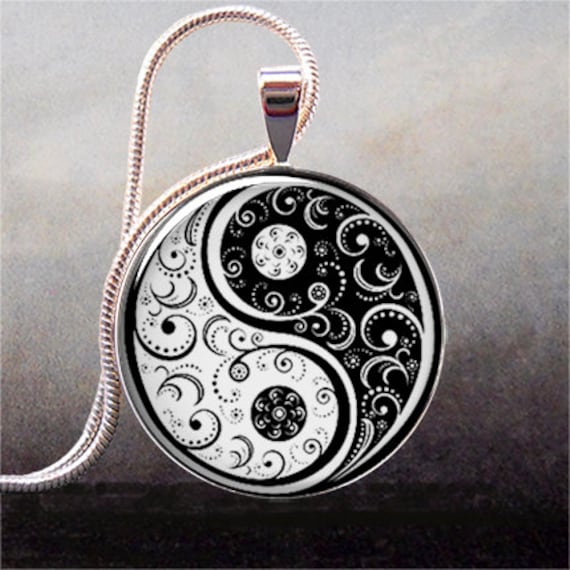Introduction
My studies of the masculine and feminine as they relate to the gospel of Jesus Christ are what led me to the study of yin and yang, because while the Bible does explain some of this concept, and the Book of Mormon does too, Chinese philosophy seems to really delve deeply into it. I am often amazed at the parallels I find between the Tao Te Ching and the Sermon on the Mount.
My favorite translation of the Tao Te Ching is here. This particular translation contains phrases that are especially meaningful to those who have been privileged to worship in the temple; other translations don't contain the same phraseology. Having an accurate translation makes all the difference to extracting the divine wisdom from the TTC.
Obviously, read it with prayer to know what is true and what is not! Remember the teachings of Joseph Smith:
“Mormonism is truth; and every man who embraces it feels himself at liberty to embrace every truth: [...]
Joseph Smith.
As Latter-day Saints, we have a unique understanding of truth, and that truth can be gathered and out to be embraced, whether it's from another creed or not. The TTC, to me, holds a lot of truth, and when I am open to it and approach it with prayer and a Gospel perspective enlightened by the Holy Bible and the Book of Mormon, I learn a lot that blesses my life.“… Mormonism is truth, in other words the doctrine of the Latter-day Saints, is truth. … The first and fundamental principle of our holy religion is, that we believe that we have a right to embrace all, and every item of truth, without limitation or without being circumscribed or prohibited by the creeds or superstitious notions of men, or by the dominations of one another, when that truth is clearly demonstrated to our minds, and we have the highest degree of evidence of the same.”5
So, to kick off a discussion of yin and yang, I must begin with the first chapter of the Tao Teh Ching. Emphasis mine:
There is SO MUCH in this chapter, but the important thing here is that the "nameless," the "origin of Heaven and Earth," or masculine/yang force, is inherently different from the "named," feminine force, "mother of myriad things." However, although they have different roles and abilities (essence vs. manifestation), and although they "differ in name," they "emerge together," and it is only when they experience unity that the "door to all wonders" is opened.The Tao that can be spoken is not the eternal Tao
The name that can be named is not the eternal name
The nameless is the origin of Heaven and Earth
The named is the mother of myriad things
Thus, constantly without desire, one observes its essence
Constantly with desire, one observes its manifestations
These two emerge together but differ in name
The unity is said to be the mystery
Mystery of mysteries, the door to all wonders
Latter-day Saints, please enjoy these concepts from a temple perspective.
The Basics of Yin and Yang
| The sun is yang; the moon is yin. |
Yang is masculine. It is hard, bright, logical, independent, and active. Yin is feminine, soft, dark, emotional, dependent, and passive. Yang is action; yin is rest. The sun, the greater light, is yang. The moon, the lesser light, is yin. Yang is dominant, yin is submissive. Yang is demanding, yin is cooperative. Yang is loud, yin is quiet. Yang is penetrative, yin is receptive.
Yang and yin complement each other and create each other, or at least illuminate each other. They contain the seeds of each other.
There is a yin-yang scale, and there is a yin-yang entity. The typical yin-yang symbol that you see around is called the taijitu. It expresses the idea that although yin and yang may look dual, they are in fact non-dual and complementary, each a holon inside a holon.
A Scale And An Entity
 | |
| The united yin-yang, or taijitu. Thanks, Clipart! Each side contains the other, brings forth the other, fits into the other. |
The scale I often refer to as "yin and yang," or with reference to the separate parts; the whole, sealed unity, I often refer to as the yin-yang. But this isn't a hard and fast rule with me. You'll see as you delve into the study of yin and yang that there are so many nuances and fascinating aspects of the concept that the terminology must shift depending on what you're discussing.
Relative Yin and Yang
The yin or yang status of everything is relative to everything else.
For example, water is yin to steam, but yang to ice. In the Gospel, the wife is yin to the husband, and the husband is yang to her, but the husband is yin to Christ (Ephesians 5:23). And though men are yang to women, women are yang to children, and humans are yang to nature. And so on.
 |
| Adam fell that men might be; and men are that they might have joy. |
Yin-Yang: Dual, or Non-Dual?
Understanding the yin-yang duality is useful for understanding human relationships and relationships between humans and everything else in the world. But one thing that recently entered my awareness is the idea that gender duality in its perfected form is also not dual. It is non-dual. Perfect femininity is not the opposite of perfect masculinity, any more than it is impossible for God to be both fully transcendent and fully immanent. The whole thing seems paradoxical, but that is only because paradox is the only way for a duality mindset to interpret non-duality. And I am beginning to suspect that one of the effects of Adam's Fall was the transition from a non-dual mindset to a dual one.
 |
| From here. |
As an example of the non-duality of yin and yang, the feminine force is not truly separate from the masculine force, because it naturally contains the masculine force. Women give birth to men. Similarly, masculine energy naturally contains a spark of the feminine force--a masculine contribution is necessary for the spark of life in a woman's womb. In this way, the two forces of femininity and masculinity are not dual: they are co-existent, differing, and inherently non-dual. It's a concept that is difficult to grasp, living in a world of opposites. But while there is a scale of duality relating to the yin and the yang, there is also an inherent non-duality about them as well.
When we at last witness femininity and masculinity in perfected form, I believe we will find that the feminine and the masculine enhance each other, create each other, strengthen each other, and contain each other. A perfectly dual non-duality.
Gospel Precedent For Non-Duality
One of my favorite bloggers and a personal inspiration to me, Progressive Prophetess, has blogged about spiritual paradoxes. This concept of seemingly inconsistent gospel ideas is not new. For example, consider the admonition to both hunger and thirst after righteousness, and feast on the words of Christ. Here are a few more examples from her blog (which are actually taken from the scriptures):
Seemingly-dual non-duality is actually a thing in the gospel. These "paradoxes" listed are really not paradoxes; they co-exist with perfection. The only problem is that right now, our minds are not equipped to fully process non-duality.
- God is no respecter of persons, He loves all the same /The concept of the elect
- Be anxiously engaged in a good cause / Patiently wait on the Lord
- I am a vengeful God / I am a merciful God
- Lose your life/ Find it
- We are responsible for our own salvation / Eternal marriage is necessary for exaltation
- Exercise faith to be healed / Everything is as it should be. Accept the will of the Lord
- Give everything away in order to get everything
- The Gospel is simple. The simpleness of the way/ The mysteries of God can't be comprehended
- We are spiritual beings/ We are carnal beings
- Zion is a physical place/ Zion is in our hearts
- Travel without purse or script. God provides/ God cares for those who care for themselves
Yin and Yang: Good and Evil?
Although yin and yang seem dual in some ways, they are truly a non-duality. Their polarity only appears that way because the human mind is primed for opposites and not non-duality. When I first began studying yin and yang, I was heartbroken because obviously yang was good, and that meant that yin was... evil.
Obviously.
Only, actually not.
There is a yin-yang scale in this universe, obviously--the yin and yang of things is relative, as covered above--but neither yin nor yang participates on the good-evil spectrum as good or evil. Neither yin nor yang identifies with good or evil. They are just not on the same scale. They do not occupy the same heirarchy, the same space, or anything like that.
Both good and evil can be measured along the yin-yang scale, however. Just as God is yang to Jesus, and They are yang to the angels in heaven, so we would presume that Lucifer is yang to his own army of devils.
 |
| From an etsy shop here. |
To the extent that the yin-yang is a self-contained entity, while it is non-dual in and of itself, it does appear to be dual with evil. The yin-yang, the divinely united combination of feminine and masculine, is the ultimate creative force, and, I suspect, the only truly creative force. The yin-yang in its perfection is the opposite of destruction.
Yin, Yang, and God
In my research on the names of God, I came across a fascinating tidbit the other day. We are all probably aware of the name "Elohim" in reference to God. One thing that has always struck me about that name is that it is actually plural (indicated by the -im suffix).
However, there's more to that name than just the peculiarly plural nature of it. Examine this tidbit courtesy of Wikipedia:
A common title of God in the Hebrew Bible is Elohim (Hebrew: אלהים), as opposed to other titles of God in Judaism. The root Eloah אלה is a feminine noun, meaning goddess, also used in poetry and late prose (e.g., the Book of Job) and ending with the masculine plural suffix "-im" ים creating a word that indicates a plurality of both masculine and feminine essences, yet in a singular identity.It appears that it is an established aspect of Judaism as well as Mormonism that God is made up of both masculine and feminine essences. We just also understand that in the context of eternal marriage. I will let you ponder that without further comment.
Conclusion
We've probably all seen yin-yang symbols on keychains and bumper stickers, but the ideas contained in the symbol and the teachings it roots in are anything but keychain- or bumper sticker-simple. Although at church we don't typically frame the gospel in these terms, which may seem more suited for only Oriental philosophy, this concept is inherent in the gospel and understanding it sheds a lot of light on many other gospel concepts.


No comments:
Post a Comment